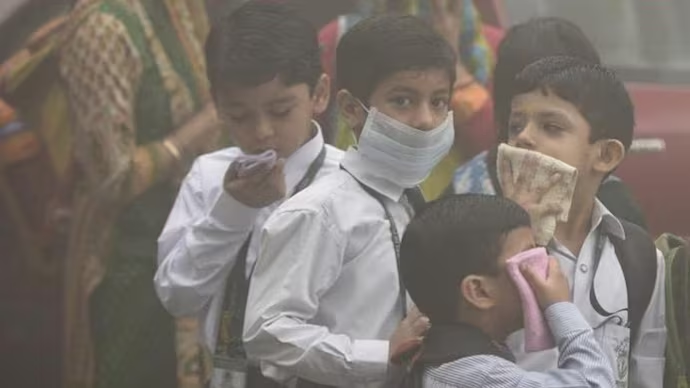India faces a growing threat from climate-sensitive infectious diseases, as malaria spreads to the Himalayan region and dengue transmission expands nationwide, a Lancet report said.
The recently published eighth Lancet Countdown on health and climate change said that the spread of the rise in diseases calls for enhanced climate-integrated forecasting, strengthened healthcare infrastructure, and greater community awareness.

The evidence-based report also revealed that coastal communities in the country face significant risks from rising sea levels, underscoring the urgent need for effective flood adaptation plans.
"The findings denote an urgent call to action for India to revitalise its health and climate policies, prioritise financial investments, and build a robust adaptive response to protect its population from the ever-intensifying threats posed by climate change," it said.
The latest Lancet report reveals a troubling reality that people worldwide are contending with unprecedented climate-induced threats.
Data shows that 10 out of 15 health risk indicators reached record highs in 2023, along with 50 days of temperatures hitting levels that pose potential harm to human health.
In 2023, the world grappled with unprecedented climatic challenges, marking the year as the hottest on record. The unabated escalation in global temperatures precipitated severe droughts, deadly heatwaves, and catastrophic forest fires, storms, and floods.
Heat-related fatalities surged, especially among those over 65, with a staggering 167% increase compared to the 1990s. People experienced an average of 1,512 hours of high temperatures posing at least a moderate risk of heat stress—a 27.7% increase from the 1990s.
This resulted in the loss of 512 billion potential labor hours and an estimated $835 billion in global income losses, significantly affecting low- and middle-income countries.
Between 2014 and 2023, extreme precipitation events increased across 61% of the global land area, heightening risks of flooding and disease.
The rise in temperatures expanded the climatic suitability for mosquito-borne diseases like dengue, which reached an all-time high of over 5 million cases worldwide in 2023. The changing climate created environments increasingly conducive to the transmission of infectious diseases such as dengue, malaria, West Nile virus, and vibriosis, even in previously unaffected areas.
In 2023, a record high of 48% of the global land area experienced at least one month of extreme drought, marking the second-highest levels since 1951.
This affected crop yields, water supply, and food security. From 1981 to 2010, exacerbated drought and heatwave events contributed to an additional 151 million people suffering from moderate or severe food insecurity across 124 countries in 2022.
Despite the grim realities of climate change, the Lancet report highlighted some positive developments offering hope for a better future.
Deaths from air pollution decreased due to reductions in coal burning, and global investment in clean energy surged to $1.9 trillion in 2023. Employment in renewables reached record highs, underscoring the sector’s potential in supporting job security.
Heat-related fatalities surged, particularly among those over the age of 65, with a staggering 167 per cent increase compared to the 1990s.
Individuals also faced an average of 1,512 hours of high temperatures that posed at least a moderate risk of heat stress — a 27.7 per cent increase from the 1990s.
This resulted in a loss of 512 billion potential labour hours and an estimated $835 billion in global income losses, impacting low- and middle-income countries substantially.
Between 2014 and 2023, extreme precipitation events increased in 61% of the global land area, amplifying risks of flooding and diseases.
The rise in temperatures also expanded the climatic suitability for the spread of mosquito-borne diseases, like dengue, marking an all-time high of over 5 million cases worldwide in 2023.
The changing climate was creating environments that are increasingly conducive to the transmission of infectious diseases such as dengue, malaria, West Nile virus, and vibriosis, even in areas previously untouched by these illnesses.
In 2023, a record high of 48% of the global land area experienced at least one month of extreme drought, marking the second-highest levels since 1951. This has affected crop yields, water supply, and food security.
The exacerbation of drought and heatwave events from 1981 to 2010 has been linked to an additional 151 million people suffering from moderate or severe food insecurity across 124 countries in 2022.

Despite the grim developments induced by climate change, the Lancet report mentioned some positive developments that offered hope for a better world.
Deaths from air pollution decreased due to reductions in coal burning, and global investment in clean energy surged to $1.9 trillion in 2023.
Employment in renewables reached record highs, underscoring the sector’s potential in supporting job security.



.jpg&w=3840&q=75)












